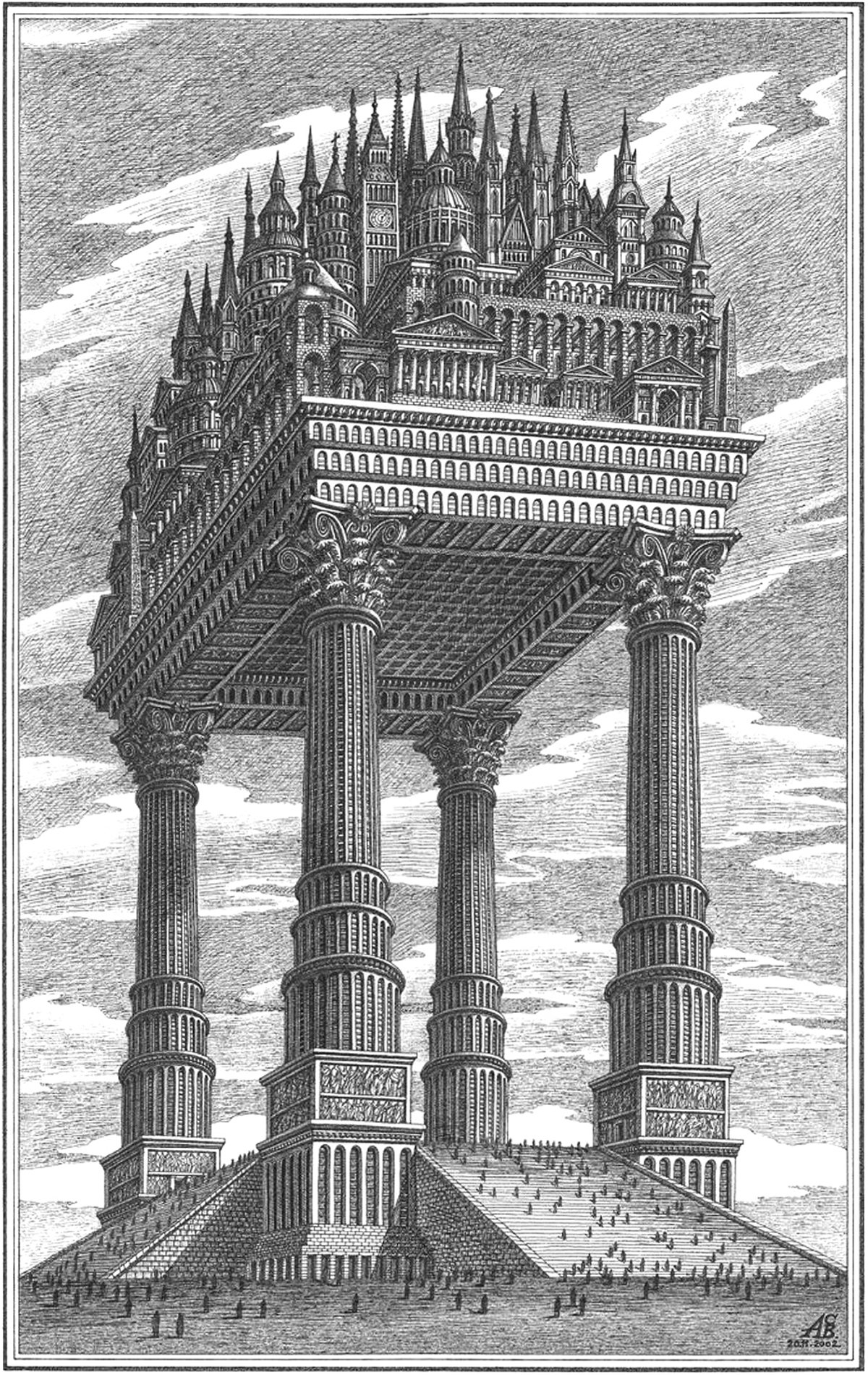The Magic City
Illustration by Russian architectural theorist Arthur Skizhali-Weiss, titled Magic City from 2002.
Pictured above is an illustration by Russian architectural theorist Arthur Skizhali-Weiss. It’s part of a series called The Magic City, which includes fictional realities dreamed up by the architect from 1999 to 2014. Apart from being an interesting composition of architectural forms, it embodies a few themes related to verticality.
The drawing features an enormous construction made up of distinct elements stacked on top of one another. This stacking is where the intrigue lies. It all begins with a massive plinth, surrounded by long, sloped sides. Crowds of people can be seen ascending and descending these sides, which suggests the plinth is meant to symbolize the surface world, or the human world. At each corner of the plinth is the base structure for a giant column. These four columns support an entablature, which is reminiscent of a Greek or Roman temple. Perched above this temple is an agglomeration of various building types and forms. This mass is crowned by a forest of spires and steeples which all seem to point up to the sky.
It’s an evocative image for a number of reasons, but the main theme seems to be the history of architecture and verticality. From the base of humanity springs the classical elements of the post and lintel, shown here as columns and entablature. These classical elements then provide the foundation for the myriad styles and building types that rest on top. The entire composition is gesturing upward, as if architectural history is based on a movement away from the surface.
In short, Skizhali-Weiss is saying that humanity created the classical elements, which led to the creation of all subsequent architectural styles. The spires and steeples at the top symbolize the human need for verticality and the never-ending drive for height that still continues today. To hit the point home, Skizhali-Weiss arranges his story vertically, which puts greater importance on the elements at the top. The entire structure serves to raise up the mass of spires and steeples, meaning these elements, and verticality in general, are the true drivers of progress.
Check out other posts about unbuilt architecture here.

